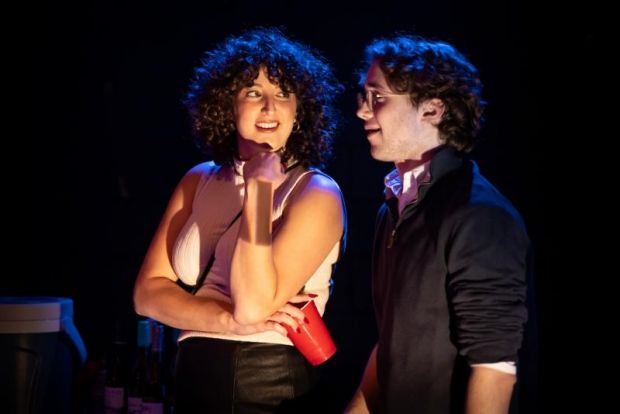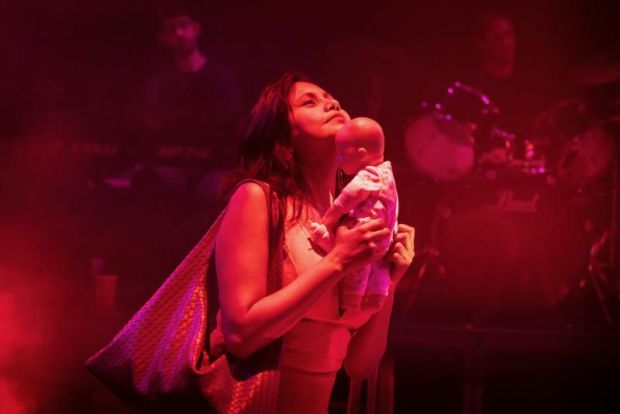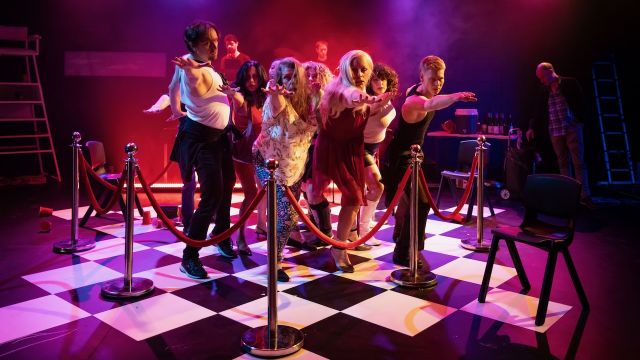St Kilda Tales
How to describe St Kilda Tales without defining it, assigning a genre, or putting it in a box? Musical Director and musician Alex Raineri, the Brisbane Music Festival Artistic Director, seems to call it a rave – and he asks how we can push the boundaries of rave. Here, rave music runs end to end of this nearly two-hour production, across and over the drama on stage. And how to describe that? It’s a montage, or a series of snapshots, or a series of tableaux of St Kilda people, street scenes, chance and not so chance encounters. As a mode of dramatic presentation, it resembles Elmer Rice’s 1929 Street Scene – which had fifteen vignettes, and thirty characters – and in that show, everything happens on the front steps of a New York brownstone.
Here, the continuous music colours what we see, but Raimondo Cortese’s ten characters rarely dance to it. When they do – an extended sequence - it’s within a red velvet rope enclosure. Otherwise, we are in apartments, up back alleys, on the street, or on the beach – most of which we imagine via what is taking place. Director Matthew Connell sets the action across the whole width of the Explosives Factory playing space – and has his actors disappear down the steep entrance stairs or circle the bleachers where we sit, trying to keep up – the actors talking and interacting all the time.

At the start, characters drift onto the stage so casually and exchange such naturalistic dialogue that we scarcely realise that the show has begun. Two young women (Clarisse Bonello and Molly Holohan) are on the beach. Their chat escalates to bickering and then a spat – and one leaves in a huff... But midway through this, on the other side of the stage, and at the same time, a transexual (Shaun Goss?) meticulously puts on make-up while chatting to a friend... And a curious young man (Alfie Baker), who looks like a nice middle-class boy, roams about trying to connect with the exotic St Kilda demimonde – as his increasingly distressed and drunk father (Tim Wotherspoon) loses his keys and his dignity and comes close to panic... Restless gay drug dealer (John Shearman) roams the streets, looking for a mark... A brutal pimp (Josh McClelland) bullies and berates his girl (Tariro Mavondo) – and dances frenetically and alone... A disconnected woman (a firecracker performance from Michelle Perera) in a tight red dress, whinges and bemoans her fate to anyone who’ll listen... And a bag lady (Anthea Davis), whom everyone seems to know, inserts herself into the talk and situations of others. And so on. (Apologies if I’ve got any names or roles wrong.) All these characters – beautifully realised and performed – traverse the space and interact with each other. Storylines clash, mix and come apart again.

It's all happening at once so it’s up to you where, and at whom you look. But it’s all so lively and vivid that it is at first strangely engrossing – because it’s real, touching, frightening, sad, and funny. And director Connell does a brilliant job in keeping his characters in character and in constant movement for close to two hours. Raimondo Cortese creates this variegated range of characters – straight, gay, connected, pathetic, alienated, victim – or, that is to say, he puts them before us, he sets them up, he gives them the beginnings of a story. And therein lies the problem of St Kilda Tales.
As audience, we can’t help expecting some development beyond mere verisimilitude. Indeed, there is some development but that serves mainly to increase our sense of expectation of more development. At one hour it might have been a glittering, dazzling, fast-moving snapshot. Once we realise the stories are going nowhere, St Kilda Tales is just quite unnecessarily too long. Perhaps the experiment of rave combined with Cortese’s ‘street scene’ took over as the objective at the expense of drama, but we are left wanting more – or in another sense, much less.
Michael Brindley
Subscribe to our E-Newsletter, buy our latest print edition or find a Performing Arts book at Book Nook.

